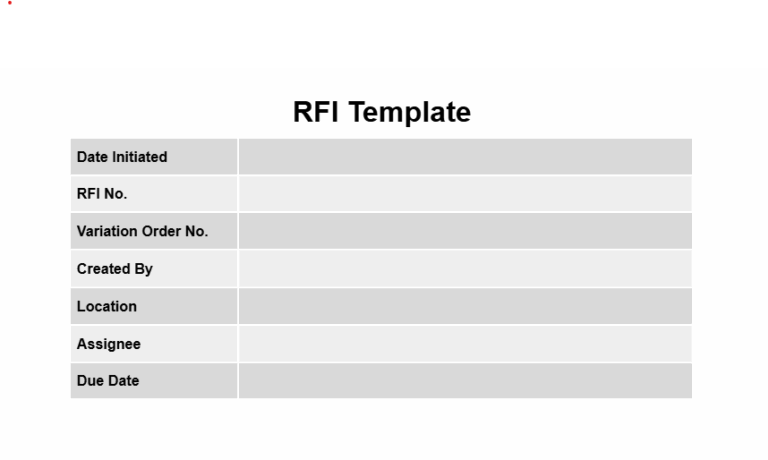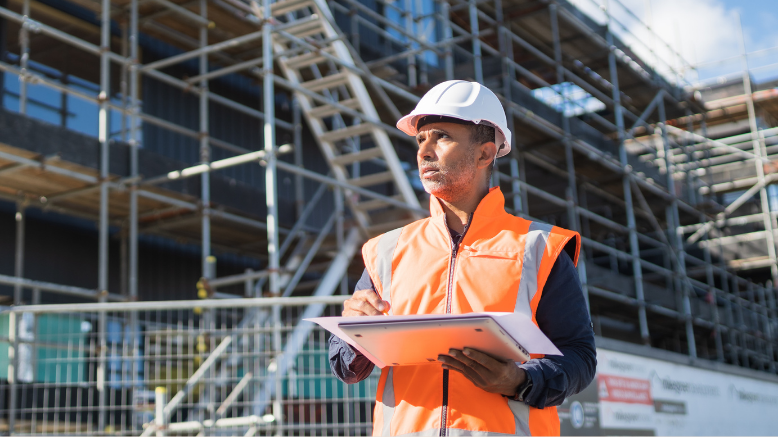— 4 min read
Free RFI Templates for Construction Projects


Last Updated Aug 28, 2025

Nicholas Dunbar
Content Manager
62 articles
Nick Dunbar oversees the creation and management of UK and Ireland educational content at Procore. Previously, he worked as a sustainability writer at the Building Research Establishment and served as a sustainability consultant within the built environment sector. Nick holds degrees in industrial sustainability and environmental sciences and lives in Camden, London.

Zoe Mullan
27 articles
Zoe Mullan is an experienced content writer and editor with a background in marketing and communications in the e-learning sector. Zoe holds an MA in English Literature and History from the University of Glasgow and a PGDip in Journalism from the University of Strathclyde and lives in Northern Ireland.
Last Updated Aug 28, 2025

When questions or issues arise on construction projects, teams must ensure everyone stays on the same page. Requests for information (RFIs) clarify details that are ambiguous or missing in construction specifications and drawings.
An RFI serves as an official document that project parties use to request information or clarification about the scope of work or contract documents. When additional details are needed, main contractors and subcontractors send RFIs to the design team – including engineers, architects, and owners.
RFIs promote open, transparent communication between contractors and design teams. Each RFI includes a response deadline, helping keep projects on programme. In an industry troubled by delays and poor communication, RFIs prove incredibly valuable.
This article provides free RFI templates for various construction scenarios, plus guidance on how to use them effectively.
Table of contents
Downloadable Construction RFI Templates
Construction professionals created these RFI templates to help contractors and project owners manage information requests efficiently. Project participants can use these forms to request additional information, clarify ambiguous specifications, and track responses and status updates for each request.
Free Download
General RFI Template
Download and customise this general-use RFI template to request more details or clarification about drawings, specifications, programmes, or address any project questions.
- Suitable for projects where no specific RFI form is required
- Ready-to-use
- Designed specifically for construction


Free Download
RFI Register Template
Main contractors and design teams use RFI logs to track RFIs submitted throughout construction projects, along with responses received and each request's status. Download and customise this RFI register template to monitor RFIs submitted throughout a project.
- Customisable to project requirements
- Ready-to-use
- Made by and for construction professionals


When to Use Construction RFIs
Any project party can use an RFI to ask questions officially, but certain situations make RFIs particularly common. Below are typical instances where RFIs prove most useful:
Seeking Clarity Throughout Projects
Construction often experiences communication gaps between design teams and contractors. An RFI can address any confusion or vagueness in plans, helping contractors complete their scope of work with certainty.
For example: If a painting contractor lacks the exact colour depicted in the specifications for an office wall, they would raise an RFI to the design team requesting the specific colour. This eliminates the possibility of using the wrong shade and saves both contractors and design teams from lengthy back-and-forth discussions to determine the correct wall colour.Preparing Accurate Estimates
Contractors also send RFIs when preparing estimates. If they have questions about the work involved, an RFI response may provide the information needed to prepare an accurate estimate.
For example: If a contractor prepares an estimate for concrete work on a project but doesn't know what type and strength of material to provide, they would submit an RFI to the architect or engineer asking for specific details.Clarifying Details During Tender
During the tendering phase, contractors might use RFIs to request information about work or materials required to complete the project. Preparing fair and accurate tenders becomes difficult without understanding the complete picture.
While contractors can submit RFIs related to construction specifications during any construction phase, clarifying details during tendering helps contractors prepare accurate bids for the work.Addressing Issues and Change Orders
When issues arise on construction projects, forward-thinking contractors send RFIs to architects, owners, or engineers requesting solutions to problems. Often, the goal involves getting answers before issues throw projects off schedule. If the solution requires changes to the scope of work originally outlined in contract documents, a variation order request may follow the RFI.
Essential RFI Components
In the UK, several different methods exist for creating RFI documents. However, all RFIs should include certain basic elements. These help keep RFIs streamlined and easy to understand – essential for receiving timely responses:
- The requesting party's name
- The responding party's name (often a design professional, owner, or contractor)
- The project name, address, and number
- A unique RFI number
- The date sent
- The due date for the response
- Drawing/specification number that the question relates to
- The question or problem
- The impact the problem may have on the programme or budget
- A possible solution to the problem
These elements work for most construction RFIs. Teams can use them to ask for information or clarification that may result in changes to the scope of work.
Key Benefits
When executing construction projects efficiently, communication becomes crucial. RFIs help close information gaps between contractors and design teams.
Clear and concise descriptions ensure contractors understand exactly what design teams have depicted in contract documents, allowing them to complete their scope of work as described. By establishing this clarity early and maintaining it throughout the project, teams can avoid costly delays, rework, and misunderstandings that often plague construction projects.
Categories:
Written by

Nicholas Dunbar
Content Manager | Procore
62 articles
Nick Dunbar oversees the creation and management of UK and Ireland educational content at Procore. Previously, he worked as a sustainability writer at the Building Research Establishment and served as a sustainability consultant within the built environment sector. Nick holds degrees in industrial sustainability and environmental sciences and lives in Camden, London.
View profile
Zoe Mullan
27 articles
Zoe Mullan is an experienced content writer and editor with a background in marketing and communications in the e-learning sector. Zoe holds an MA in English Literature and History from the University of Glasgow and a PGDip in Journalism from the University of Strathclyde and lives in Northern Ireland.
View profileExplore more helpful resources

Construction Management Contracts: A Complete UK Guide
Managing construction contracts can lead to an extensive physical paper trail. Sharing contracts, getting signatures and managing timelines is difficult when teams and clients are scattered across job sites and...

Key Differences Between Contractors & Subcontractors
In UK commercial construction, main (or principal) contractors engage directly with project owners to deliver complete construction programmes, while subcontractors perform specific scopes of work under the main contractor’s management....

The Role of RFPs in UK Construction Projects
Requests for Proposals (RFPs) are a core document for construction procurement in the United Kingdom. Effective RFPs align expectations, establish clear evaluation criteria, and create accountability between clients and contractors....

Financial Management in Construction Projects
Effective financial management can make or break construction projects. Teams that master budgeting, cash flow and cost control are better positioned to deliver projects on time, within budget and with...
